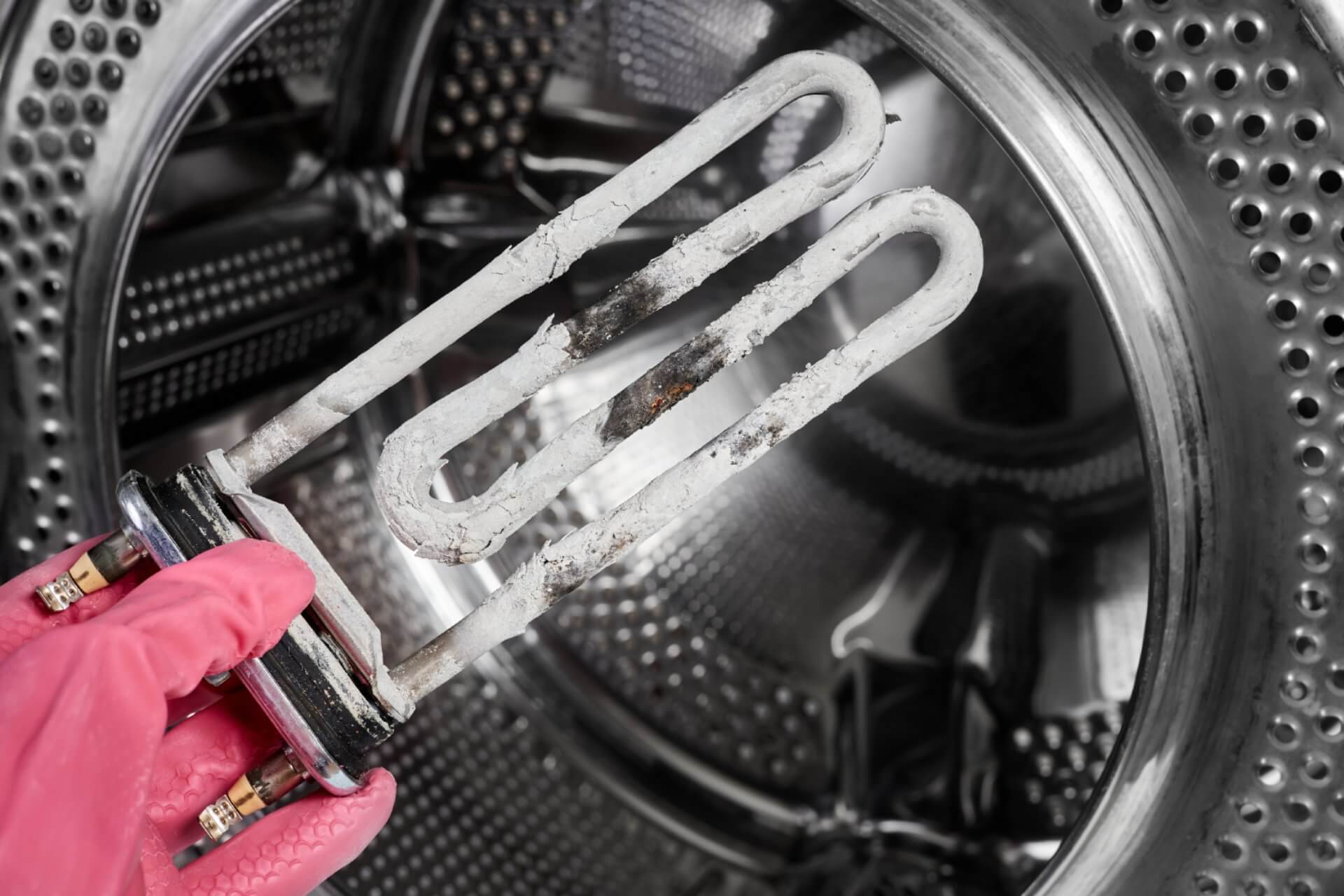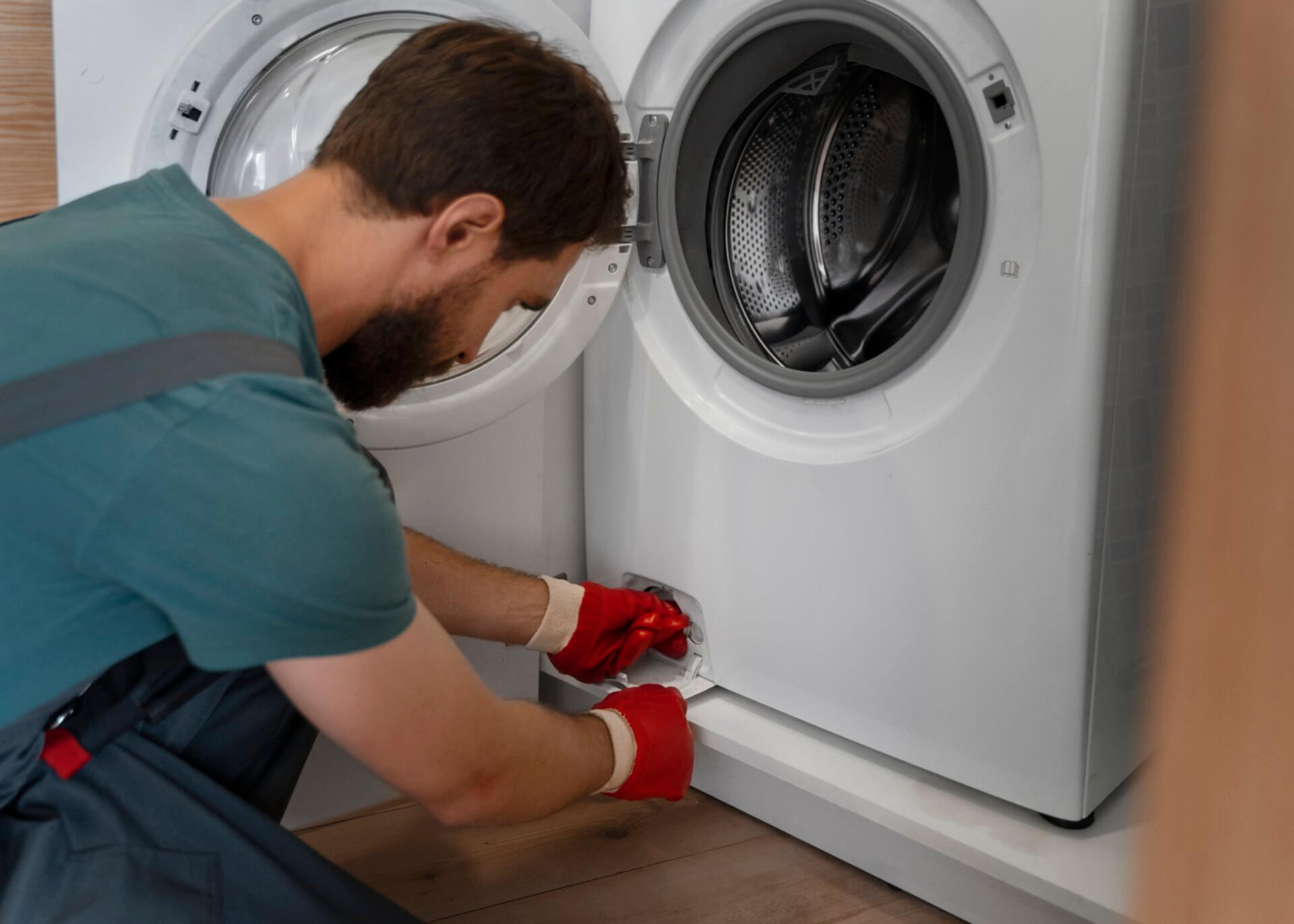Washing Machine Not Draining? 4 DIY Fixes | Australian Guide 2025
Let's face it - there's nothing worse than opening your washing machine to find a tub full of standing water and soggy clothes. When your washing machine won't drain, it's not just annoying - it can put your entire laundry day on hold! But here's the thing - you don't always need to call in the pros!
I've been there myself, and trust me, many washing machine drainage problems can be fixed with some basic DIY know-how. This guide will walk you through the 4 most effective DIY fixes that solve about 90% of drainage issues, potentially saving you hundreds in unnecessary service calls.
![Washing machine with open door showing standing water inside the drum]
Common Reasons Your Washing Machine Won't Drain
Before we dive into the solutions, it helps to understand what might be causing the problem. When your washing machine won't drain, it's typically due to one of these issues:
- Clogged drain pump filter — The #1 cause responsible for roughly 60% of drainage problems
- Kinked or blocked drain hose
- Drain pump malfunction
- Clogged drain pipe or standpipe
The good news? The first two causes are completely fixable with basic DIY skills and zero special tools.
4 Effective DIY Fixes for Washing Machine Drainage Problems
1. Clean the Drain Pump Filter
Possible Signs:
- Water remains in the drum after the cycle ends
- Washing machine stops mid-cycle
- Strange gurgling sounds during drain cycles
- Error codes related to drainage (typically "dE", "nd", or "E2" depending on your model)
The drain pump filter is designed to catch small items that make their way into your washing machine - things like coins, buttons, bobby pins, and built-up lint. Over time, these items can create a blockage that prevents proper drainage.
DIY Fix:
- Locate the drain pump filter — Usually found behind a small door on the lower front of your washing machine
- Prepare for water spillage — Place towels and a shallow pan under the filter area (there will be trapped water!)
- Drain residual water — Some machines have a small drain hose near the filter for this purpose
- Remove and clean the filter:
- Slowly unscrew the filter (counterclockwise) to allow water to drain gradually
- Remove any debris, lint, or foreign objects
- Rinse thoroughly under running water
- Check the filter housing for additional debris
- Reinstall the filter — Make sure it's properly seated and tightened to prevent leaks
Pro Tip: This simple 10-minute maintenance task should be performed every 3-4 months to prevent drainage issues before they start. Mark it on your calendar!
![Hand cleaning washing machine pump filter showing coins, lint and debris removed]
2. Check and Clear the Drain Hose
If your drain pump filter is clean but water still isn't draining, the problem might be with your drain hose.
Possible Causes:
- Kinked hose — Responsible for approximately 25% of drainage issues
- Hose clogged with lint or debris
- Improper installation height (drain hose too high)
- Hose inserted too far into standpipe creating a siphoning effect
DIY Fix:
- Unplug the washing machine — Safety first!
- Pull the machine away from the wall — Give yourself enough space to work
- Inspect the entire length of the drain hose:
- Look for obvious kinks, bends, or pinch points
- Ensure it hasn't been crushed between the machine and wall
- Disconnect and check for clogs:
- Place a bucket under the hose connection points
- Disconnect the hose from both the machine and drain pipe
- Visually inspect for blockages
- Run water through the hose or use a long brush to clear any debris
- Proper reinstallation:
- Ensure the drain hose height is between 60-90cm from the floor
- Don't insert the hose more than 15cm into the standpipe
- Create a gentle curve rather than sharp bends
![Diagram showing proper vs improper drain hose installation with 60-90cm height measurements labeled]
3. Clean the Standpipe and House Drain
Sometimes the problem isn't with your washing machine at all - it's with your home's plumbing system.
Possible Signs:
- Multiple appliances draining slowly
- Gurgling sounds from nearby drains when washer drains
- Water backing up into other fixtures
- Standing water appearing in shower or tub when washing machine drains
DIY Fix:
- Check the standpipe — The pipe where your drain hose connects to the home plumbing
- Clear any visible obstructions
- Try a natural drain cleaner:
- Pour 1 cup of baking soda down the standpipe
- Follow with 1 cup of white vinegar
- Let sit for 30 minutes
- Flush with hot water
- Use a plumbing snake for stubborn clogs:
- Feed the snake into the standpipe
- Rotate while pushing deeper
- Pull back to retrieve debris
- Consider professional help if the clog persists or seems deep in your plumbing system
![Person using a plumbing snake to clear blockage in washing machine standpipe]
4. Check the Drain Pump
If you've tried the previous solutions and your machine still won't drain, the drain pump itself might be the culprit.
Possible Signs:
- Humming noise but no draining
- No sound at all during drain cycle
- Burning smell during operation — If you notice this, stop using the machine immediately!
- Error codes specific to pump failures
The drain pump's job is to force water out of your washing machine. When it fails, water stays put.
DIY Fix:
- Unplug the washing machine — Essential for safety
- Locate the drain pump:
- Remove the back panel or front kickplate (model dependent)
- The pump is typically located at the bottom of the machine
- Visual inspection:
- Look for obvious damage or debris around the pump impeller
- Check wiring connections for loose or damaged wires
- Test for obstructions:
- Manually rotate the pump impeller (if accessible)
- It should turn freely without resistance
- Testing the pump:
- This requires a multimeter to check continuity
- If you're comfortable with basic electrical testing, check resistance across pump terminals
- No continuity indicates pump failure requiring replacement
Warning: If you're not comfortable working with electrical components or don't have the right tools, this is where calling a professional makes sense. In Australia, drain pump replacement typically costs $300-450 including parts and labour — still much cheaper than a new washing machine!
![Close-up of washing machine drain pump showing impeller and electrical connections]
Prevention: Stop Drainage Problems Before They Start
The best way to deal with washing machine drainage issues is to prevent them in the first place:
- Empty pockets before washing — Check for coins, tissues, and other items that could clog the system
- Use a lint catcher for pet hair or if you wash lint-heavy items
- Clean the drain pump filter quarterly — Takes just 10 minutes but prevents 60% of drainage problems
- Run a hot water cleaning cycle monthly — Add 2 cups of white vinegar to reduce buildup
- Be careful what you wash — Sandy beach towels and excessively muddy clothes should be pre-rinsed
When to Call a Professional
While these DIY fixes resolve the vast majority of drainage issues, there are times when professional help is warranted:
- You've tried all the above solutions without success
- There's a burning smell coming from the machine
- You hear the pump running but it's making unusual noises
- Your washing machine is under warranty
- You're not comfortable disassembling parts of your machine
Conclusion
A washing machine that won't drain is certainly frustrating, but as you can see, the fix is often much simpler (and cheaper) than you might expect. In my experience, about 85% of drainage issues can be solved with the first two fixes alone - cleaning the filter and checking the drain hose.
Taking care of these simple maintenance tasks regularly can extend the life of your washing machine by years and save you from those dreaded mid-laundry-day emergencies. Your washing machine is designed to last 10-15 years with proper care - don't let a preventable drainage issue cut that lifespan short!
![Technician performing routine maintenance on washing machine with tools and cleaning supplies]
Frequently Asked Questions (FAQs)
How do I manually drain a washing machine with standing water? Most front-loading machines have an emergency drain hose near the filter. For top-loaders without this feature, you can use a wet-dry vacuum or siphon the water using a garden hose.
Why does my washing machine drain slowly but not completely stop? Partial clogs are the most common cause (responsible for 70% of slow draining). The drain pump filter or hose likely has a partial blockage that allows some water through but restricts normal flow.
Is it normal for some water to remain in my washing machine after a cycle? A small amount of water (less than a cup) is normal in the bottom of front-loading machines. More than this indicates a potential drainage issue.
My washing machine drains but then stops mid-cycle with an error code. What's happening? This typically indicates a sensor issue or intermittent drainage problem. The machine can initially drain but detects a problem during the cycle, often due to a partial clog that becomes worse as more water attempts to drain.
How much does it cost to replace a washing machine drain pump? In Australia, the part itself typically costs $150-250 depending on your model. Professional installation adds $200-300 in labour, making the total repair $350-550 — significantly less than a new machine.
Can I use chemical drain cleaners in my washing machine? No! Chemical drain cleaners can damage rubber seals, plastic components, and pump impellers. Stick to mechanical cleaning methods or natural solutions like vinegar and baking soda.

About Julian
Home appliance enthusiast and DIY repair specialist with a passion for helping others save money on appliance maintenance.
Related Articles

Washing Machine Leaking Water? 6 DIY Fixes That Work | Australian Guide

Washing Machine Making Loud Noise? 7 DIY Fixes | Australian Guide 2025

